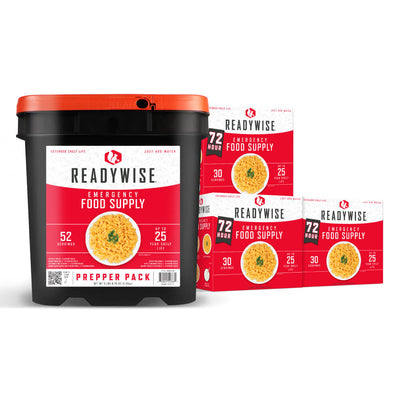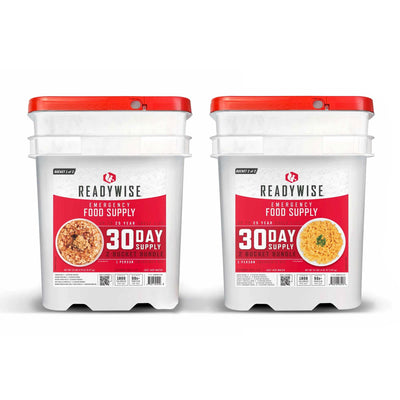Family Earthquake Preparedness Plan
Do you have a family earthquake preparedness plan? Are you prepared to be self-sufficient for days, weeks, or even months depending upon the severity of the earthquake? Do you ignore earthquake dangers because you think you aren't at risk? Check out the article below - you may be more at risk than you previously thought. The first half of this article talks about what is currently going on in one part of the country and is a good example of why you may be at risk where you live. The second half of the article talks about the most important items to include in a preparedness plan.
In February, I posted an article about Oklahoma's dramatic rise in earthquakes and that residents should prepare themselves for more earthquakes to come. I also touched a little on whether or not the quakes are human-induced or a result of mother-nature. Well, it happened again, more earthquakes have struck this area and other areas of the country are now at high risk according to the Unites States Geological Survey (USGS). Now is the time to come up with a family earthquake preparedness plan before the "big one" hits.
Early on Easter Sunday morning (March 27th) three earthquakes shook the ground again in northern Oklahoma at a magnitude of 2.7, 3.3, & 3.6. Then on the next day, Monday the 28th, the USGS released the first-ever hazard map for human induced earthquakes. Then the day after that on Tuesday the 29th, there were two more earthquakes (4.1 & 4.2 magnitude) near Crescent that were felt in Oklahoma City & in Tulsa.
This is unprecedented. Never before in our recorded history has there been such a large scale upsurge of continuous earthquakes and never before has the USGS released a human-induced earthquake hazard map. Right now the quakes are still relatively minor in terms of the magnitude it takes to create a major disaster; however, some experts believe these quakes are the warning signs (like the rumbling before an erupting volcano) leading up to a major catastrophic event.
USGS Human-Induced Earthquake Risk Map
If a major earthquake does hit, it is likely to cause catastrophic damage to the major metropolitan areas of Oklahoma City, Tulsa, Wichita, and all areas around these cities, especially within the triangular shape that these three cities create (see the red area on Oklahoma & Kansas in the map above).
During the past couple years there has been a lot of debate on what is causing the sudden surge of quakes in Oklahoma and Kansas. According to some articles there has been enough science that suggests that the upsurge in quakes is human-induced mainly due to waste water injection wells from the sheer volume of oil & gas fracking in the area combined with high-angle faults.
If theses earthquakes are human-induced as a result of waste water injection wells from fracking then this problem could be silently growing in other parts of the country as oil & gas fracking is now the industry standard. There are shale formations all across the country that contain prime reserves of natural gas. Many of these shale formations have already been tapped into and others will be getting tapped as the years go by.
Major quakes can make country roads impassable.
City highways and overpasses collapse making travel impossible
Let’s not talk about the devastation and the doom and gloom that follows a major earthquake, but rather about how this will affect you directly and what you need to do to be prepared. If you live anywhere near an earthquake risk area, your family earthquake preparedness plan will need to include three basic but very important items - food, water, and shelter.
A major quake will make many of the roads impassable and the power will be out for a long period of time. You will not be able to travel to find supplies and stores will not be able to restock their shelves as the supply trucks can't get through. With the road infrastructure damaged and power grid down it will be a while before stores will be able to provide basic supplies to the general public. This is why it is so important to have your own source of food, water, and shelter.
Dehydrated/Freeze Dried vs. Canned & Boxed Food
Water Filtration vs. Water Storage
What about water? You will need to be prepared with water filtration or water storage options. If you live within walking distance to a water source (creek, river, lake, pond, etc.) you can simply filter the water as you need it. If you are filtering your water you'll need to use a water filtration system that effectively removes biological pathogens (giardia, cryptosporidium, etc.), chemicals (toxic chemicals, pesticides, detergents, etc.), and dissolved solids (arsenic, lead, mercury, heavy metals, radiological radon 222, etc.). If you do not have access to a body of water then you will need to either stock up on bottled water or store a supply of water in water storage containers such as in 50 gallon water storage containers. The CDC recommends 1 gallon of water needed per person per day for preparation of food, drinking, and personal hygiene. It is a good idea to have water stored away but to also having a water filtration system as a backup in case you run out of water. If water filtration is your primary water option then be sure to have a second water filtration system on hand in case the first one gets damaged or malfunctions for any reason.
Temporary Shelter
If your home is severely damaged and is unsafe to live in you will need some type of temporary shelter. Chances are that if the roads are impassible you will not be able to travel to a community shelter facility and even if you did it may be full by the time you get there. So then what? Have you ever been camping? Tents are a cheap, reliable, and effective means of temporary shelter. If you haven't been camping then pick up a tent and take your family camping to get a feel for it. You need to see what works and what doesn't work. Your tenting accommodations need to be somewhat comfortable so you don't end up pulling each other’s hair out. Be sure to camp at a site that doesn't have running water or electricity as this will mimic a realistic survival situation. This is extremely valuable as it shows how much or little water you will really need. You can get an idea of what it is like to try to conserve water when cleaning dishes, brushing your teeth, personal hygiene, etc. During your camping trip take notes on things you need to work on or other supplies you may need to make life more comfortable for you.
So there you have it - your earthquake preparedness plan needs to include food, water, and shelter. These three key items are the most basic but also the most important in terms of survival.
About the Author:
Darren Gaebel is a U.S. Army Veteran and has a decade of experience with natural disasters as a catastrophe claims adjuster. During Darren's catastrophe experience he has seen the toll it takes on families who are unprepared. For this reason he created this blog (blog.UrgentSurvival.com) to help educate and spread awareness for disaster preparedness. Darren also created UrgentSurvival.com to provide a way for individuals, families, and disaster relief organizations to have access to a stress free solution for getting prepared. A portion of all proceeds from the website are donated to non-profit disaster relief organizations.
















































































